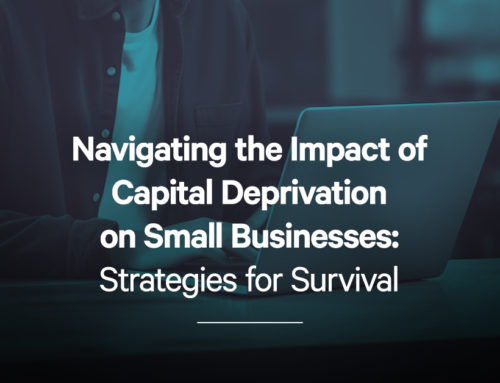Any business can get into debt trouble, at any stage. This is when business debt plans come into action. Just because a business debt plan is being implemented, it doesn’t always mean that the company is about to close.
It is possible to utilise debt for a long-term investment or as working capital. If you are looking to use a debt management plan as a long-term investment, consider a bond, a loan or a leasing arrangement. However, if looking to fund a debt as working capital, asset-based finance (ABF) or even a simple overdraft may be more appropriate.
Types of debt business plans
Essentially, a debt business plan is an arrangement between a lender and a borrower where a lump sum is loaned by the lender, and has to be paid back by the borrower in full. The debt accrues interest and repayments by the business are usually a combination of a capital repayment and interest.
The advantage of a debt business plan is that the company does not have to give up any control of the business or ownership.
There are three principal types of debt:
- Asset-based finance (ABF)
- Loans and overdrafts
- Fixed income debt securities
Asset-based finance (ABF)
ABF is securing debt against a company’s assets and can be in the form of:
- Asset finance, such as hire purchase or leasing
- Invoice factoring, invoice discounting or asset-based lending (ABL)
- Supply chain finance
Asset finance is low risk and can be used by businesses to invest in new equipment, or vehicles or office furniture, where insufficient cash flow limits flexibility. Hire purchase and leasing are the two main forms of asset finance. The debt is secured against the new asset. For the borrower, this can be a safer option as the finance cannot be recalled whilst the agreement remains active, as long as the borrower regularly makes the payments.
With leasing, the business rents the asset for a specific length of time from a leasing company that owns the asset. Hire purchase is suitable for assets that the business ultimately wants to own. The borrower enters into an agreement with a finance company, who buys the asset for the borrower. The business makes regular repayments to the finance and ultimately, once the purchase figure and interest has been paid, it takes over ownership of the asset.
Asset-based finance is a suitable form of investment debt for businesses that are suffering from cash flow issues. However, lenders will only enter into agreements with businesses that are established and can demonstrate a good trading history, and have assets that match the value being lent. There are four principal forms of asset-based finance:
- Invoice factoring
- Invoice discounting
- Supply chain finance
- Asset-based lending
Invoice factoring
This form of business debt plan is often used by smaller businesses that need cash flow support. Lenders will provide funds based on a business’s unpaid invoices. So, if a business sells their services or products on a credit basis to other businesses, they may opt for invoice factoring.
The lender, or ‘factor’, advances 80-90% of the value of the business’s invoices. The balance becomes available when the invoices have been paid, less any charges that are due. It is the lender that continues to collect monies owed and the business’s customers are aware of the situation.
Invoice discounting
Invoice discounting is similar to factoring but is more suitable for bigger companies for two main reasons:
- The invoice discounting provider becomes a ‘hidden partner’ of the business. The collecting of monies, i.e., administrating the sales ledger, stays with the business. Customers continue to be invoiced by the business, as normal.
- The funding from the invoice discounting provider tracks business growth. The higher the turnover, the greater the funding available.
Supply chain finance
Also known as reverse factoring, supply chain finance enables small suppliers to get the benefit of credit strength that is usually granted to larger customers.
The agreement is between the supplier and their customer. Once the customer has approved the funding, which can be as much as 100% of the invoice value, it can often be at a very competitive interest rate. There are more and more alternative providers of supply chain finance in the market today.
Asset-based lending
Once only available to larger businesses, smaller companies are now able to take advantage of asset-based lending (ABL). Again, similar to invoice financing, it is funding for companies that are providing against debts and a wider variety of assets, i.e., a company’s stock, plant machinery, property and even income streams or intellectual property.
This form of business debt plan is often used by companies involved in business acquisitions or mergers, as well as management buyouts.
Loans and overdrafts
Overdrafts are usually a short-term business debt plan to help a business get over cash flow issues on a day-to-day basis. Available from banks, an overdraft is an agreed arrangement that is flexible according to the needs of the business. Banks will charge an arrangement fee and interest all the time a business uses the overdraft facility.
A loan is better suited to a long-term debt arrangement, i.e., to invest in new machinery, computer equipment or vehicles. The loan can be unsecured – the business will often need to prove that they are a low credit risk – or secured against an asset. There are a variety of loan providers that will lend to businesses, dependent on certain criteria. Repayments will be based on the capital owed and interest accrued.
Fixed income debt securities
Also known as bonds or mini-bonds, fixed income debt securities are available from credit unions. These are cooperative companies that are able to provide funding to their members.
As with all business debt plans, when used for investment purposes, it is important that regular payments are maintained.
If your business is struggling with debts or you are thinking of winding up a solvent company voluntarily, the first step is to seek professional advice. Our highly experienced professionals at Leading are on hand to help and advise on the process.






